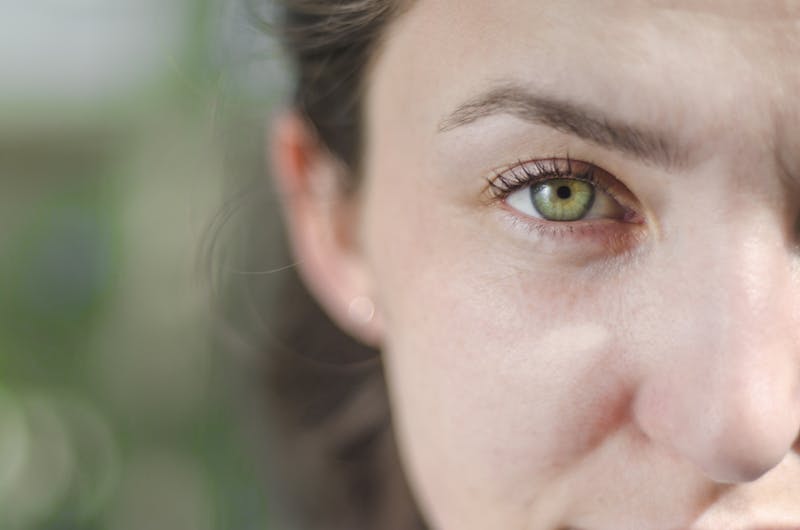
Have you noticed one eyelid drooping more than the other, especially when you’re tired or looking back at photos? You may be experiencing a condition known as ptosis, and if it affects just one eye, it can feel even more noticeable and frustrating. The good news is that there’s a reason this happens, and even better, there’s a solution.
As a board-certified oculofacial plastic surgeon, Dr. Flora Levin specializes in diagnosing and treating eyelid conditions like ptosis with precision, artistry, and compassion. Here’s what you need to know if one of your eyelids isn’t quite keeping up with the other.
What Is Ptosis?
Ptosis (pronounced toe-sis) is the medical term for a drooping upper eyelid. It can occur in one or both eyes and may range from mild to severe.
Unlike hooded eyelids, which are due to excess skin, ptosis is caused by an issue with the muscles that lift the eyelid, specifically the levator or Müller’s muscle.
People with ptosis often report that:
- The eyelid feels heavier or harder to keep open
- The drooping worsens with fatigue
- Their eyes look uneven in photos
- Vision may be obstructed in severe cases
Learn more about ptosis from the American Academy of Ophthalmology.
Why Does Ptosis Happen in Just One Eye?
While ptosis can be bilateral, it often affects only one eye, and the causes are surprisingly varied. Common reasons include:
1. Age-Related Muscle Weakness
- As we age, the levator muscle that lifts the eyelid can stretch or thin, especially in one eye more than the other
- This form of involutional ptosis is one of the most frequent causes of asymmetry
2. Congenital Ptosis
- Some people are born with a weaker eyelid muscle in one eye, which may not become noticeable until later in life or under certain lighting or fatigue conditions
3. Nerve or Muscle Damage
- Ptosis can be related to neurological conditions or prior trauma
- If the nerve controlling the levator muscle is impaired, or if there’s been previous surgery or inflammation, it may result in one eyelid failing to lift properly
4. Eye or Eyelid Lesions
- Sometimes, a growth or lesion, such as a chalazion (eyelid cyst), can weigh down the eyelid or cause swelling that stretches the muscle
5. Contact Lens Use or Surgery History
- Frequent use of contact lenses, particularly hard lenses, or a history of eye surgery, can slowly loosen the delicate eyelid attachments, often more in one eye than the other
A careful examination is essential to determine the exact cause and rule out any underlying medical concerns. That’s why ptosis should always be assessed by a specialist trained in eyelid anatomy, like Dr. Levin.
How Is Ptosis Treated?
The treatment for ptosis depends on the severity, underlying cause, and degree of muscle function:
- Müller’s Muscle-Conjunctival Resection (Internal Approach): This technique is ideal for mild ptosis with good muscle strength. It tightens the smaller Müller’s muscle from the inside of the eyelid, with no visible scar. It’s typically performed under local anesthesia with minimal downtime.
- Levator Advancement (External Approach): This procedure is best for more pronounced ptosis. Dr. Levin makes a discreet incision in the eyelid crease to tighten or reposition the levator muscle. This approach allows for precise adjustment and is often combined with upper blepharoplasty for optimal rejuvenation.
Learn more from the American Society of Ophthalmic Plastic and Reconstructive Surgery.
Why Choose Dr. Flora Levin for Ptosis Repair?
Because ptosis is often unrecognized or misdiagnosed, selecting a surgeon with specialized training in eyelid anatomy and function is essential. Dr. Levin, a board-certified oculofacial plastic surgeon, is uniquely qualified to differentiate between cosmetic eyelid issues and true ptosis, ensuring precise correction and natural-looking results.
She performs ptosis repair in Westport, Fairfield, and the surrounding communities in Connecticut, helping patients achieve a more alert, youthful, and balanced appearance, regardless of whether one or both eyes are affected.
Ready to Lift and Rejuvenate?
If one of your eyelids is drooping and you’re wondering whether ptosis might be the cause, schedule a consultation with Dr. Flora Levin. With her expertise and patient-first approach, you’ll receive a comprehensive evaluation, personalized surgical plan, and compassionate care from start to finish. Book your ptosis repair consultation today and take the first step toward brighter, more balanced eyes.

